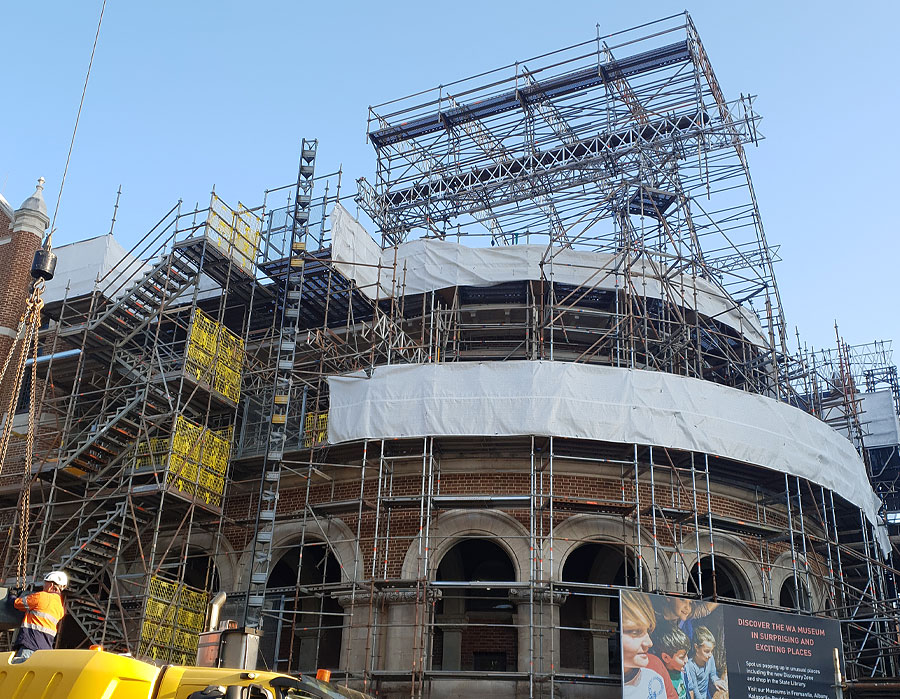
Stay Safe on High: Scaffolding Hazards and Safety Tips
Scaffolding is undoubtedly one of the most critical parts of the construction industry. Without scaffolds, it would be impossible for workers to carry out their duties at heights safely and efficiently. However, scaffolding can also be hazardous if not installed and used correctly. In this article, we’ll explore the potential hazards of scaffolding, the standards in place to ensure worker safety, and the proper installation procedures to guarantee a secure work environment.
Hazards of Scaffolding
Scaffolding poses several hazards to workers. The hazards may arise from the use of faulty or substandard scaffolds, lack of training, and failure to adhere to safety procedures. Some of the hazards of scaffolding include falls, electrocution, and falling objects.
Falls are the most common hazard associated with scaffolding. Falls from scaffolds may result from unstable scaffolds, lack of guardrails, and unsecured planks. Falling from scaffolding can also be quite fatal, resulting in severe injuries or even death.
Electrocution is another hazard associated with scaffolding. Workers may come into contact with live wires or electrical circuits, resulting in electrocution. To avoid this, workers should be trained on how to identify electrical hazards and take the necessary precautions.
Falling objects are also a potential hazard of scaffolding. Workers may drop tools, materials or debris from the scaffold, injuring those working below. Workers should be trained on how to secure tools and materials on the scaffold to prevent them from falling.
Australian Standards for Scaffolding
The Australian Standard AS 1576.3:2015 is the definitive guideline for scaffolding in Australia. It details the necessary requirements for the design, erection, and use of scaffolds in the construction industry.
This standard outlines the specific materials, dimensions, and loads that must be taken into account when designing and erecting a scaffold. The standard mandates that competent individuals who have the necessary skills, knowledge, and experience to construct scaffolds safely must design, erect, and inspect them. It also requires that scaffolds be erected on a stable and level surface and be outfitted with guardrails and toeboards to prevent falls.
The standard further mandates that scaffold be capable of withstanding any wind or other forces that may act on them and be erected at a safe distance from power lines to prevent electrocution. Adhering to these standards ensures the safety of workers at height and prevents accidents and injuries in the construction industry.
Safety Tips When Installing and Using Scaffolding
Ensuring worker safety when installing and using scaffolding is of paramount importance in the construction industry. In Australia, there are several safety tips to follow when installing and using scaffolding to prevent accidents and injuries.
Firstly, it is critical to select the appropriate scaffold for the job and to design the scaffold based on the specific requirements of the job. The scaffold should be erected on a stable and level surface, and guardrails and toeboards should be installed to prevent falls.
Secondly, workers should wear appropriate personal protective equipment (PPE), including hard hats, safety glasses, and non-slip footwear, to prevent injuries.
Thirdly, the scaffold should be inspected by a competent person before use to ensure that it is safe to use, and periodic checks should be carried out thereafter.
Finally, workers should receive adequate training on how to use scaffolding safely and be aware of hazards such as electrical lines and unstable surfaces.
Adhering to these safety tips when installing and using scaffolding can significantly reduce the risk of accidents and injuries in the construction industry.
Final Thoughts
Scaffolding is important in the construction industry, but it can also be dangerous if not used properly. People can fall, get electrocuted, or be hit by falling objects. To avoid accidents, there are Australian standards that everyone has to follow. These standards include using a stable scaffold with guardrails and toeboards, inspecting it before use, and wearing protective gear. Workers should also receive proper training. Following these guidelines can help prevent accidents and injuries on the job.
Ensure proper scaffold installation for your construction project with the help of Access Engineering Group. We are a scaffolding company in Perth with over 20 years of experience in the industry. Our teams of highly trained experts guarantee you access safely and efficiently on any project, large or small. Get in touch with us today!




Leave a Comment